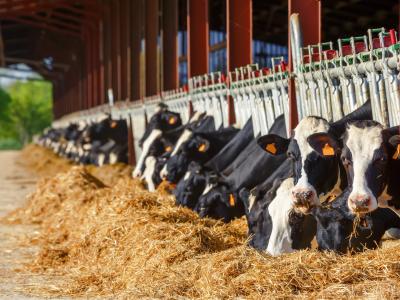Feb 21, 2013 (CIDRAP News) – The World Health Organization (WHO) today recommended changing one of the three vaccine strains for the Northern Hemisphere's next flu season, based on the changing profile of circulating influenza B strains.
An expert group that met in Geneva earlier this week suggested changing the B component of the vaccine, but sticking with the A/H3N2 and A/H1N1 components.
The WHO recommended strains similar to the following for the 2013-14 flu season:
- A/California/7/2009 (H1H1) pdm09
- A/Victoria/361/2011 (H3N2)
- B/Massachusetts/2/2012, which replaces B/Wisconsin/1/2010
Though the team recommended a different influenza B virus, it is from the same Yamagata lineage as this season's vaccine. Influenza B viruses come in two lineages, Victoria and Yamagata, and predicting which one will circulate in an upcoming season is difficult.
Advisors analyze a host of the most current data on the circulating flu strains from around the world and make their recommendations for what to include in the next seasonal flu vaccine for the Northern Hemisphere in February. The timetable allows vaccine companies to prepare the vaccine viruses and grow them in eggs. The vaccine formulation process takes about 6 months.
Today's recommendation is different than the one the WHO's expert group made for the Southern Hemisphere on Sep 19, 2012, which included the same three strains as the year before and is the same as for the current Northern Hemisphere flu season.
For vaccine companies that plan to make quadrivalent (four-strain) vaccine that contains two influenza B strains, the WHO recommends including a virus similar to Brisbane/60/2008, which was a component of the Northern Hemisphere's trivalent vaccine for the 2011-12 flu season and is from the Victoria lineage.
In March 2012 the US Food and Drug Administration (FDA) approved a quadrivalent vaccine from MedImmune Inc., which is a live-attenuated vaccine delivered in a nasal spray. Also, Sanofi Pasteur in October files for FDA approval of its Fluzone quadrivalent vaccine, which it projects will be approved in the second quarter of 2013. Other companies are also working on quadrivalent versions of their seasonal flu vaccines.
The expert panel's analysis of circulating influenza B strains found that while Victoria lineage viruses are prevalent in some countries, the proportion of Yamagata lineage ones continue to increase and are becoming dominant in many countries. When they looked at patterns with the genetic clades, they found that many viruses in clade 2, which includes B/Massachusetts/2/2012, were antigenically distinct from those in clade 3, which includes B/Wisconsin/1/2010.
The H3N2 virus has been the dominant flu strain in much of the Northern Hemisphere during the current flu season, with the H1N1 strain responsible for fewer illnesses in North America than in other parts of the world such as Europe.
See also:
Full report on strain selection
Oct 1, 2012, CIDRAP News story, "WHO: 2013 southern flu vaccine should copy 2012 northern version"



















